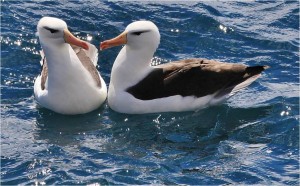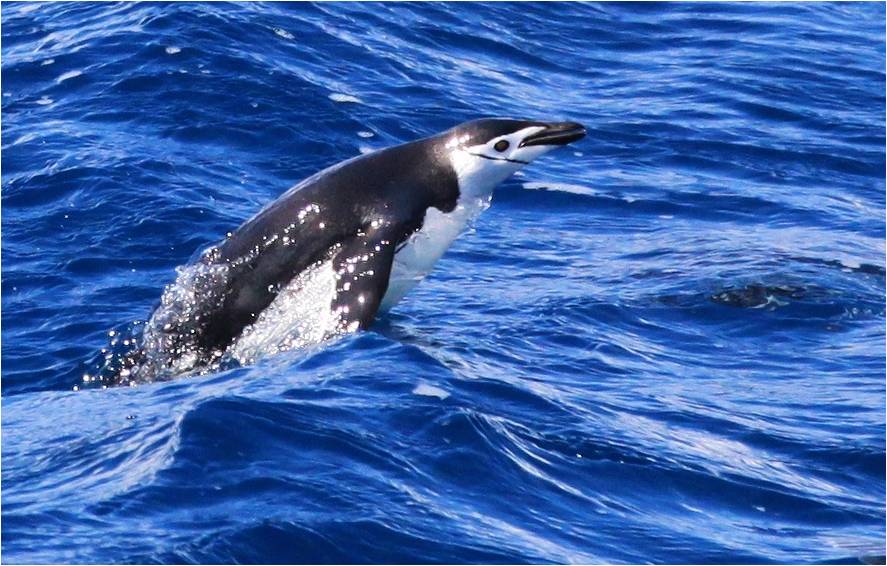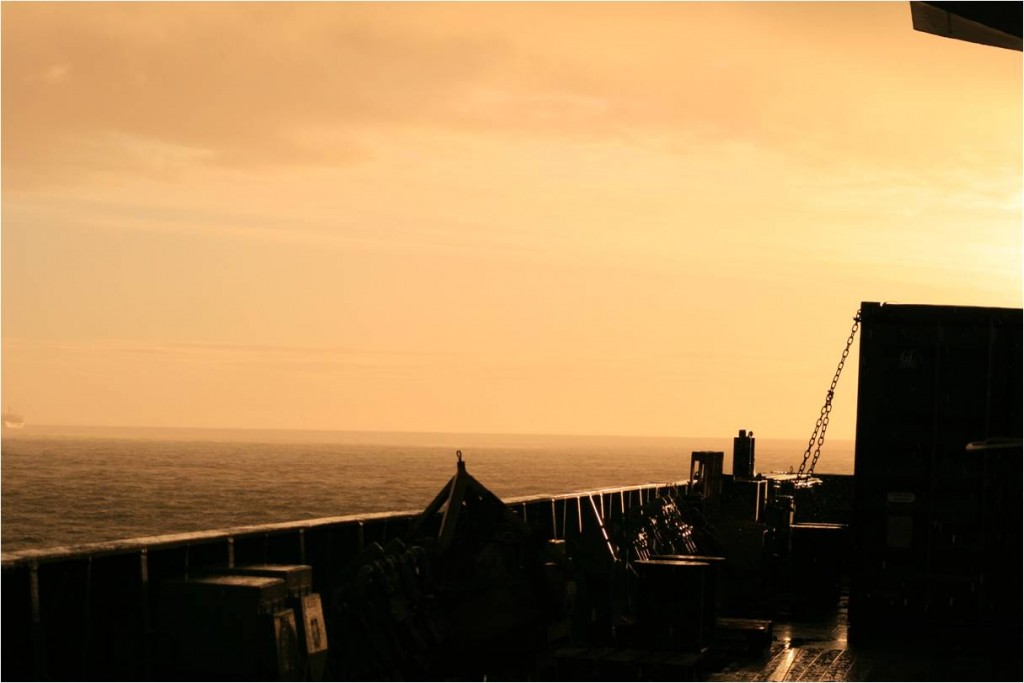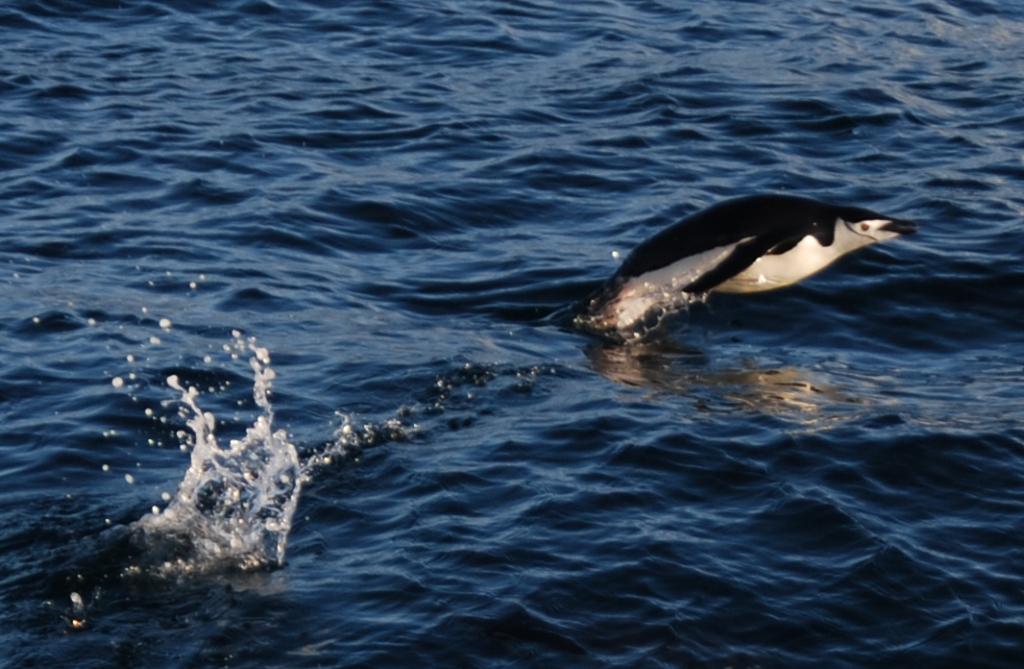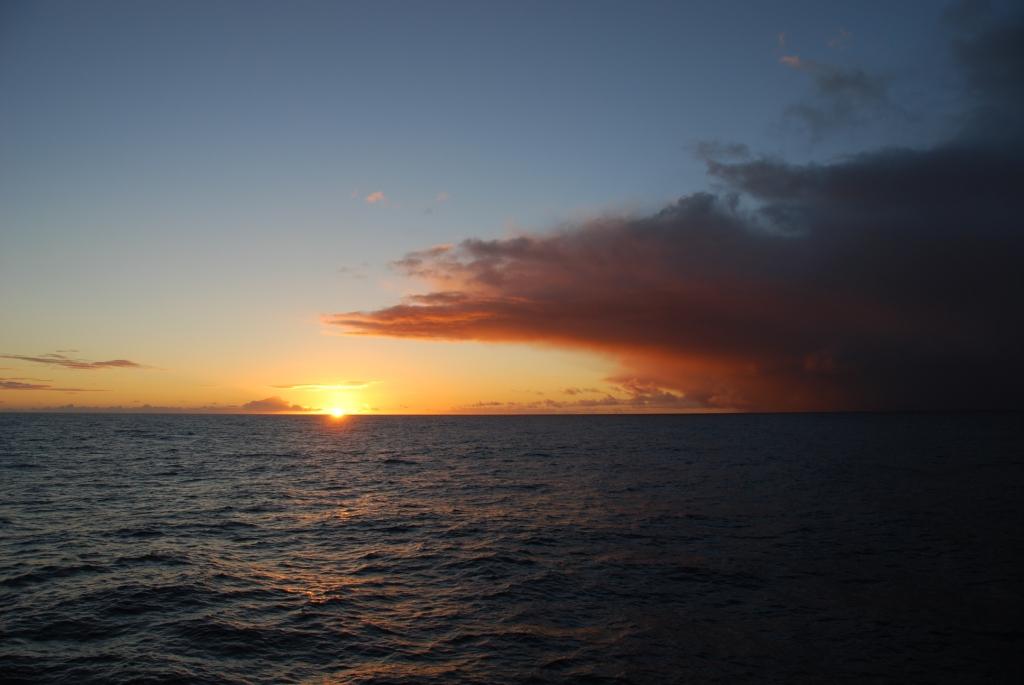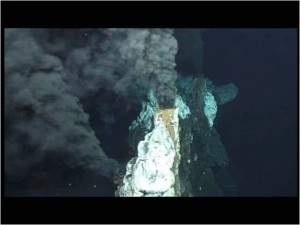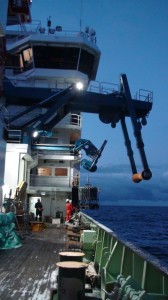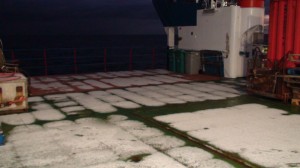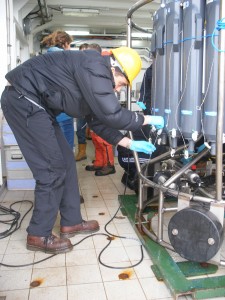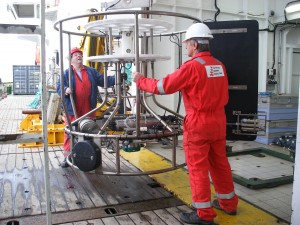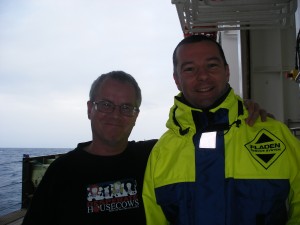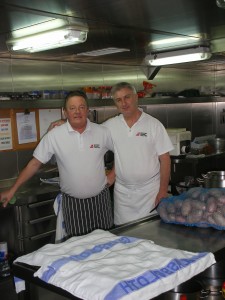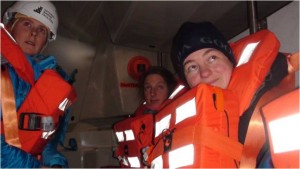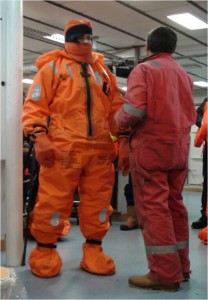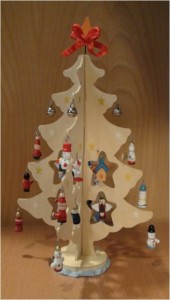Yes we have extra space…please see the updated blog for day 11/12
*******
You know that sinking feeling when you have made a mistake? 06:00 yesterday I got that feeling big time. It came with the realization that perhaps my bravado in an earlier blog suggesting “I’ll sleep when I’m dead” was something that my body was not going to be able to cash. It came facing the mountain of samples I had yet to process as the last of my fellow biologists dusted their hands and said…”That is me, I’m off too bed”.
But let us back up oh….8 or so hours. I’ve come on watch and the first thing to be done is to pick up from the last ROV watch. I know what’s coming I’ve been watching the TV relay into the main lab/sciences office. It looks like a blizzard in car headlights. The analogy is close enough. It is phytoplankton, the sea’s green plants, and other matter in the upper surface of the sea reflecting off our camera lights. This means Isis is in the upper water layers and by a process of deduction based on the direction of the blizzard across the screen, we are surfacing. Bummer! That means all the good stuff in the ROV van is over and we get paper work and tidy up. Swap out the last of the video tapes, take through all the paper logs for scanning and filing, remove all the cups the last watch left, snaffle the chocolate the last watch left…Every job has the admin. We drew the short straw.
There is an upside. We get samples. This is good. We have been waiting for these for a while. Second the timing could not be much better. The problem is that when samples come on board, you need to deal with them. If you are unlucky the ROV comes up right in the middle (or worse start) of your sleep. I’m lucky. I’ll work 20 minutes of my ROV shift and the remaining 5hr 40minutes I would normally spend in the ROV control room, I’ll spend doing my own (not communal) sampling.
Wrapping up the control van means I miss the social gathering that occurs on deck. It takes place just beyond the safety barriers while waiting for the ROV to be secured and powered down making it safe for a bunch of highly intelligent people with absolutely no common sense to come forward and stick their hands in all sorts of awkward places to pick up their exceedingly precious samples.
I include myself in the no common sense list. I’ve done my calculations and I know how many sample I would like of which species and from where. The chief scientist has done his very best to collect them for me…. I just didn’t ask the question “how long will this take to process”. The following half hour is an enlarged ant colony swarming over Isis and removing buckets, boxes, sensors and tools and then following a nice procession to the hanger where the path stops and none shall pass.
Standing behind an 2m table bolted to the floor is Katrin…our very organized German. Every cruise should have one. No sample may disappear into the bowels of the controlled temperature room or microbiology container without first going through Katrin. Buckets are sorted into trays and sub divided into prior agreed recipient lists. They are recorded in the big black log book and given a unique sample number which they will keep until they reach maturity as a full fledged data point. We now know what the sample is and this will tally back to when and where it was collected. We will know where it will live after the cruise and who is the person responsible for nurturing the sample to maturity.
I’m duly allocated my trays. “Here are your 25 white anemones and 5 crabs of your own, You ave to share the tray of 15 viz Chong for is genetics”. Then its limpets, snails, sea spiders (they are not true spiders but a group called pycnogonids and yes we have a pycnophobe on board) and more of the same from different sites. I’m lucky its so cold (air temp 0.0oC) we can dispense with fridges and we can go into the controlled temperature room to warm up!
With an immense amount of blind optimism that comes from receiving samples that I have waited a long time for we start to chew through them. The processing line starts up. Take an example of the specialty of our study site Kiwa, a yeti crab. Leigh is up first and takes size and gender for population studies, Chong takes a muscle sample for genetics, Jane takes a belly scraping for analysis of the bacteria growing on the crabs chest hairs, then it comes to us in the food webs group. More muscle and bacterial scrapings for our feeding studies and finally it returns to Leigh who whips out the gonads to complete the population details with maturity. We can swap orders a bit.
One by one the chain shortens as people complete their tasks and head for bed. Finally the food web group are faced with a backlog of tissue collections to make. The final blow to my enthusiasm comes at 06:00 when Jenny, one of the 4am gym crowd braves the journey up into the hanger in her gym gear and back into the super structure before descending back down into the gym (avoiding the water tight doors that make a huge racket when opening and closing) at the same time as the the sole surviving microbiologist heads for bed.
It is times like this I fall back on some well tested tactics. No one to talk to, no one to listen to and more importantly no one to hear me. I down the now stone cold coffee I forgot about, crank up the MP3 to 11 and howl out the Rolling Stones (please swap music to taste). It is quite a sight, scalpel in one hand, sample vial in the other, warbling completely off key and blessedly drowned out by the engines of the vessel and the rattle of winches as the ROV goes about its business on the sea floor lining me up for another long night.
Chris

